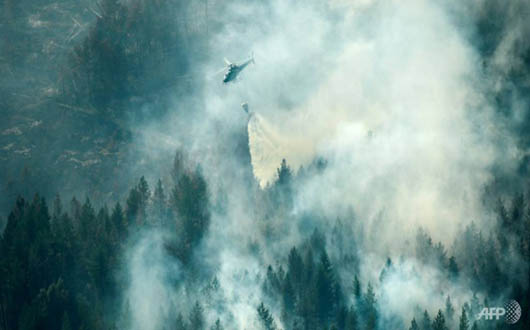NORRTŽLJE, Sweden, July 20, 2018 (BSS/AFP) – As an unprecedented drought
scorches large swathes of Sweden’s green pastures, farmers are having to send
their animals to slaughter because they have no hay left to feed them.
“This is the worst thing I’ve ever experienced… my father who was a
farmer for 60 years has never seen anything like this before,” says Jacob
Gustawson in Norrtalje, a town north of Stockholm, as the 47-year-old eyes
the sky for the tiniest cloud offering some hope of rain.
But, aside from a paltry 13 millimetres that fell in mid-June, there has
been practically none since the beginning of May, as Sweden pants under the
hottest temperatures in over a century.
“May was exceptionally warm in southern and central Sweden. June was the
warmest in more than 100 years in southernmost Sweden,” Sverker Hellstrom of
the Swedish Meteorological and Hydrological Institute told AFP.
Firefighters say they are putting out between “20 and 30 wildfires per day”
near Stockholm while other blazes are raging across the country, even in the
Arctic circle.
Sweden’s King Carl XVI Gustaf, who is also a landowner and rarely comments
on public matters, expressed concern over the fires engulfing his nation.
“I and the royal family would like to express our support to all those who
have been affected by the fires,” he said in a statement.
A large part of Sweden, as well as Denmark, southern Norway and northern
Finland, is currently experiencing a period of extreme heat which, according
to weather forecasts, is unlikely to end soon.
– ‘Nothing new growing’ –
As a result, farmers are being forced to disrupt their seasonal routines
because crops such as fodder for animals are not growing the way they used
to.
“Normally, at this time of the year, it’s supposed to be” about 30-40
centimetres high, Jacob Gustawson tells AFP as he points to the grass which
is barely 10 centimetres tall.
The farmer, who leads a herd of more than one hundred dairy cows with his
wife Anette Gustawson, is forced to feed the animals with winter reserves “to
keep them alive”.
“We have to feed the cows inside now, all the forage for the winter time
are being fed now and nothing new is growing so I don’t know what is going to
happen in the winter time,” he says anxiously while wearing a t-shirt with
the name of logo of his farm called “Billinge Gardsmjolk”.
Apart from the lack of water, the milk from the cows is also a major
concern. If the animals are not well-fed then their product’s quality will
suffer too.
“They are not going to milk as much as I would like to,” Gustawson says as
he seeks shade under a tree to cool down.
– ‘Buy Swedish’ –
The lack of fodder has already forced some farmers to send several of their
cows to slaughter.
“It will take years to rebuild the quality and size of the cattle,” says
Ulf Wallin, spokesman for the Federation of Swedish Farmers and warned
against wildfires at the beginning of the harvest season.
“This is the worst crisis for Swedish farmers in more than 50 years,” he
said, adding the loss is already estimated at more than two billion Swedish
kronor (194 million euros, $224 million).
The Gustawson family’s loss is estimated at more than 200,000 kronor.
To cope with this unprecedented crisis, the Federation of Swedish farmers
is calling on consumers to “buy Swedish” and on products to be “sold
Swedish”.
“If the Swedish people buy Swedish food and most importantly, Swedish meat
during this crisis, then they can save the demand for meat on the market, and
help farmers have a reasonable income,” Wallin said.



